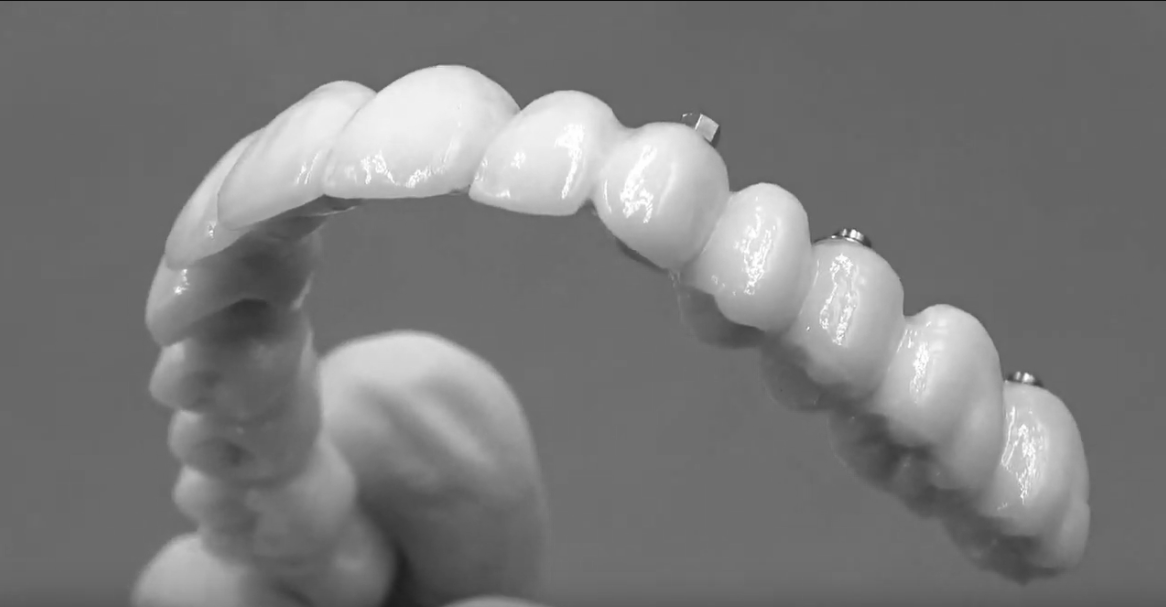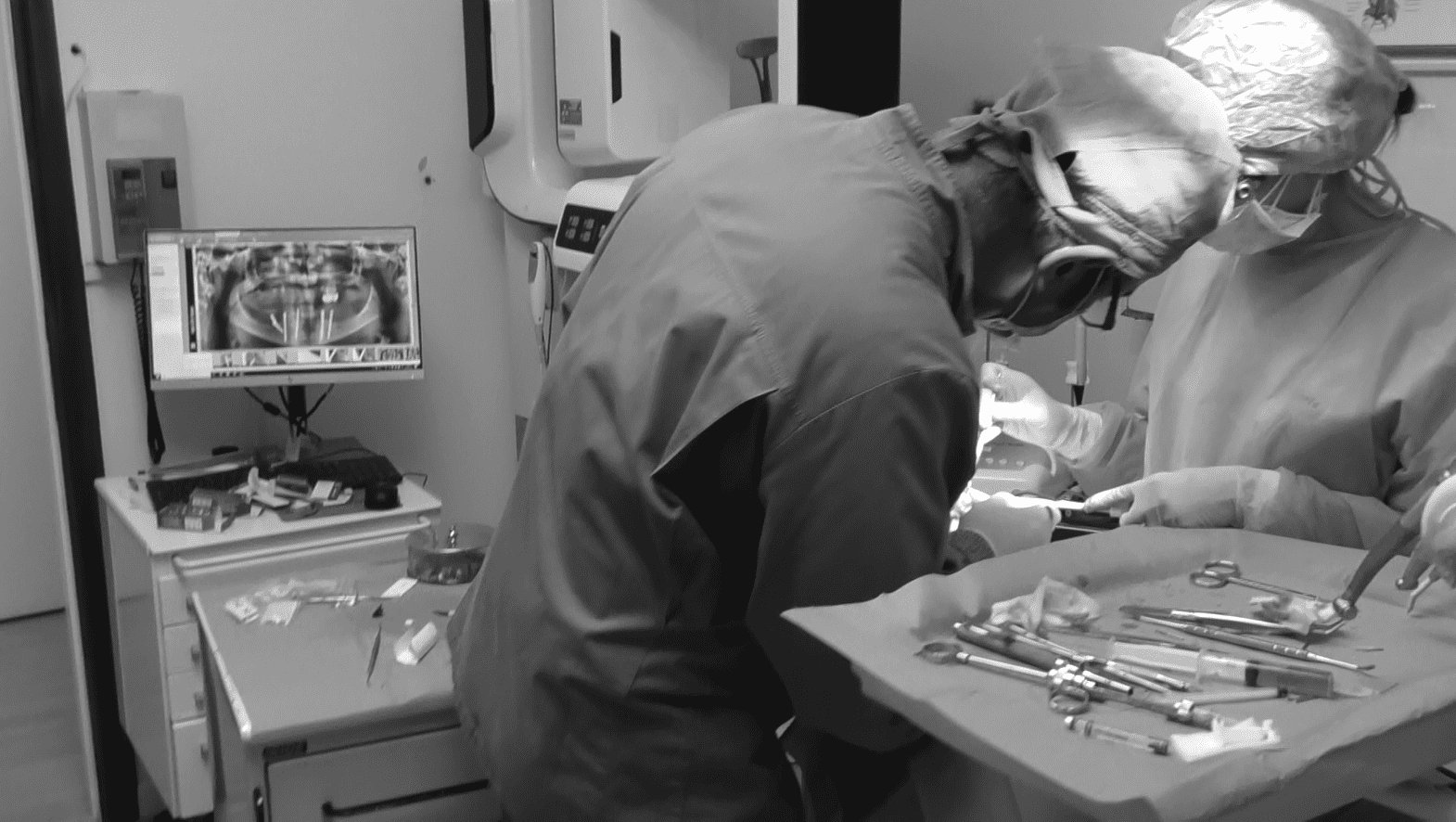The Galileus Cerclage Sinus® Surgical Technique: A Solution for Severe Atrophies of the Upper Jaw
The Galileus Cerclage Sinus® surgical technique has been developed to address severe atrophies of the upper jaw. This innovative approach avoids the use of autologous bone grafts and sinus lifts, offering numerous advantages over traditional techniques.
Severe atrophies of the upper jaw can be caused by various conditions such as tooth loss, periodontal disease, or prolonged use of dental prostheses. These atrophies can lead to significant functional and aesthetic problems, compromising the patient’s quality of life.
The Galileus Cerclage Sinus® technique is based on the use of a special device called Galileus Cerclage Sinus®, which is placed around the atrophic upper jaw. This device is made of titanium, a biocompatible material that integrates perfectly with the surrounding bone.
Once the cerclage is placed around the jaw, by inserting a special implant length 19/21 into the basal cortical bone area 18/28 continuing around the perimeter of the upper jaw in zone 15/25, two additional transversal implants known as nasal implants length 18/19 mm are inserted towards the nasal spine. Once inserted, the Galileus Cerclage Sinus® surgical technique is completed by successfully rehabilitating the patient, encircling them in a way that provides greater protection for the atrophic maxillary sinuses, while at the same time bypassing them, avoiding masticatory load. This transition from an area that would have created problems for rehabilitation to a central area to support future fixed mastication for the next 20/30 years.
The Galileus Cerclage Sinus® technique offers numerous advantages over traditional techniques. Firstly, it avoids the use of autologous bone grafts, thus reducing the risk of complications associated with bone donation. Furthermore, it eliminates the need to lift the maxillary sinus, reducing surgical trauma and accelerating the healing process. Finally, thanks to the use of titanium cerclage, the Galileus Cerclage Sinus® technique ensures long-term stability of the basal bone, reducing the risk of resorption and improving aesthetic and functional outcomes.
In conclusion, the Galileus Cerclage Sinus® surgical technique represents an innovative and safe solution for severe atrophies of the upper jaw. Thanks to its minimally invasive approach and the numerous advantages it offers over traditional techniques, this technique is gaining popularity in the medical community and offering new hope to patients with severe atrophies of the upper jaw.
The pterygoid basal bones are another important component of the jaw skeletal system. These bones are located at the back of the mouth, near the temporomandibular joint. They are composed of a dense and resistant structure that makes them perfect for supporting chewing and joint stability.
The pterygoid basal bones are classified as category D2 in terms of hardness and resistance. This means they are less strong than the basal bone of the maxillary alveolar bone, but still robust enough to withstand the forces generated during chewing. The 21-length implant anchors its apex not in the tuberal bone but in the basal cortical bone category d1, therefore the hardest we have inside our human body, anchoring in the pterygoid laminae of the sphenoid offers a solid base for posterior molar chewing for the next 20/30 years, without fears of resorption or lack of bone strength, which in this area thanks to their consistency can deliver and exert the greatest chewing force when the force is applied during molar chewing phases, and the greatest support force to maintain overall chewing support in that strategically strongest zone in terms of the force exerted and produced during molar chewing all complete.
One of the distinctive features of the pterygoid basal bones is their wing-like shape. This shape allows them to play a crucial role in supporting surrounding structures such as jaw muscles and ligaments. Additionally, the pterygoid basal bones are also important for the proper positioning of teeth in the jaw.
Like the basal bone of the maxillary alveolar bone, the pterygoid basal bones do not wear out over time. This characteristic is essential to ensure the stability of dental implants inserted in this area. The strength and durability of the pterygoid basal bones make them a reliable anchor for dentists during dental implant procedures.
In conclusion, the pterygoid basal bones are a fundamental component of the jaw skeletal system. Their wing-like shape and strength allow them to play a crucial role in chewing and temporomandibular joint stability. Furthermore, their durability and ability to maintain their structure over time make them an ideal anchor for dental implant placement.
The Galileus Cerclage Sinus® Technique
The Galileus Cerclage Sinus® technique utilizes the characteristics of the pterygoid basal bones to insert two pterygoid dental implants with a length of 19/21 mm into the posterior area of the upper jaw (18/28). These two implants constitute the first two pillars, one on each side, that will provide the necessary support for a future fixed dental prosthesis during chewing.
Continuing along the perimeter of the upper jaw, in zone 15/25, two additional transverse implants known as nasal implants are inserted, with a length between 18/19 mm. Positioned towards the nasal spine, one on the right (position 15) and the other on the left (position 25), these implants create the basis for addressing severe atrophies of the upper jaw, avoiding the use of bone grafts and lifting of the maxillary sinuses.
Once these two implants are also inserted, the Galileus Cerclage Sinus® technique allows addressing severe atrophies of the posterior bone of the upper jaw in just two hours. This procedure surrounds the maxillary sinus, protecting it and creating the four posterior pillars that will support strong and stable chewing for the next 20/30 years.
The Galileus Cerclage Sinus® technique has been developed specifically to address severe atrophies of the upper jaw bone, which can be caused by various conditions such as tooth loss, osteoporosis, or prolonged use of removable prostheses. This innovative technique offers an effective and long-lasting solution to restore dental function and improve patients’ quality of life.
One of the distinctive elements of this technique is the use of pterygoid implants, which harness the anatomical characteristics of the pterygoid basal bones to provide solid and stable anchorage in the posterior area of the upper jaw. These implants, combined with nasal implants, create a four-pillar structure that offers sufficient support for a future fixed dental prosthesis.
The Galileus Cerclage Sinus® procedure has been developed by a team of expert dentists and maxillofacial surgeons who have combined their knowledge and skills to create an innovative approach to upper jaw bone reconstruction. Thanks to this technique, patients can benefit from complete dental rehabilitation without the need for bone grafts or invasive surgeries.
The Galileus Cerclage Sinus® technique has been shown to be highly effective in treating severe atrophies of the upper jaw bone, offering lasting results and improved quality of life for patients. This procedure represents a significant advancement in oral surgery and offers a safe and reliable solution to restore dental function and improve smile aesthetics.
The Galileus Cerclage Sinus® technique offers a range of advantages that make it an excellent choice for patients in need of dental implant surgery. One of the main advantages is the protection of the maxillary sinus during the procedure. This is particularly important because the maxillary sinus is a delicate structure that can be easily damaged during surgery.
Furthermore, this technique evenly distributes the chewing load across the entire arch of the upper jaw. This helps prevent overloading of specific areas of the jaw, thus reducing the risk of long-term complications. The balanced distribution of loads on the perimeter axis of the upper jaw also contributes to better chewing function, allowing patients to enjoy a more comfortable and natural chewing experience.
Another significant advantage of the Galileus Cerclage Sinus® technique is the unparalleled aesthetics achieved, thanks to the use of fixed ceramic and zirconium circular prostheses without false gums (after consultation with the surgeon), offering the opportunity to obtain a fixed prosthesis with 14 custom-made and handcrafted teeth without false gums, highly aesthetic and functional with a highly natural result that meets the highest satisfaction of our patients. With this implant-prosthesis solution, the best support for dental chewing is achieved, with a chewing function supported and supported by chewing loads distributed throughout the perimeter axis of the upper jaw, offering the opportunity to rely on a complete chewing experience unparalleled in the prosthetic implant panorama. In fact, no other technique offers such advantages, such as a mouth full of teeth with all molars restored and in function, and finally the aesthetics achieved by offering a natural solution with aesthetics without false gums that gives the patient a highly natural aesthetic result. This aesthetic and functional result offers a natural and convincing smile, which can increase patients’ confidence and self-esteem.
Finally, the Galileus Cerclage Sinus® technique has been shown to have proven clinical results in the treatment of severe atrophies of the upper jaw. Due to its effectiveness, this procedure has become the preferred choice for many patients seeking dental implant surgery. The numerous benefits offered by this technique make it a complete and reliable solution to restore chewing function and the aesthetics of the upper jaw.
In conclusion, the surgical technique of Galileus Cerclage Sinus® currently represents the best solution for severe atrophies of the upper jaw. Thanks to its proven clinical results and numerous benefits, this procedure should be considered by anyone wishing to undergo dental implant surgery. Its ability to protect the maxillary sinus, evenly distribute the chewing load, and offer unparalleled aesthetic results make it an excellent choice for patients seeking a complete and reliable solution to restore the function and aesthetics of the upper jaw. Finally, the Galileus Cerclage Sinus® technique, with objective results in hand and visible to all, proves to be the best solution, taking as a reference for comparisons, 1 the support on the perimeter arch of the upper jaw, 2 the chewing function that follows, benefiting from the best distribution of chewing loads on the entire perimeter axis of the upper jaw, both in the front area and in the deep posterior area, with the restoration of the entire molar chewing area, finally, the occlusion on the axis and the reactivation of all the previous muscles of the temporomandibular zones that regain function and development in those areas that would otherwise atrophy over time, while at the same time reactivating the areas of osteoblasts that, thanks to the impulses of chewing, will contribute to delivering and therefore reversing the aging process that instead of acquiring, to then regress, are reactivated to then reproduce and regenerate bone volume around the implants, which will also benefit the temporomandibular muscle areas around the mouth to regain and maintain a young temperament for as long as possible.

